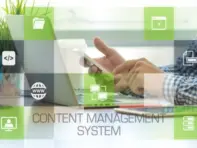Explore key innovations that are transforming the commercial and non-commercial sectors with the ExtraMile by KnowledgeNile interview series. Here, we host experts and thought leaders from diverse industries to discuss the emerging tech trends, practices, and more.
In this Q&A session, we are excited to feature Tanuja Korlepra, the Chief Technology Officer of the leading social good software developer, Bonterra. The firm is determined to empower non-profit and charitable organizations with its innovative tech solutions. Bonterra’s goal is to establish a giving revolution, generating funds of over $573 billion every year.
Tanuja looks after the company’s technology strategy alongside product development and engineering operations. Her expertise in cloud, high-performance computing, AI, and data has contributed to Bonterra’s success remarkably.
In the discussions, we’ll get a glimpse of Tanuja’s journey in the tech sector while assessing the significance of social good software development for non-profit foundations. Additionally, we’ll gather insights around AI adoption, technological budget management, and others.
Welcome, Tanuja. We’re pleased to have you with us today!
You have an extensive professional journey in the tech sector. Can you share the key turning points in your career that led you to become the Chief Technology Officer at Bonterra?
Tanuja. Becoming a CTO was never part of a master plan. I did not chart a long-term career path, but always focused on doing great work, staying open to change, aiming higher with each opportunity, and investing in trust-based relationships. That mindset has been my guiding compass.
In my development roles at Veritas, I worked on large-scale distributed systems for enterprise clients, building technical foundations. My growing interest in the business side led me to product leadership roles and a management degree from Harvard, where I focused on strategy and finance. At AWS and Microsoft, I led product management for cloud storage services like S3 Glacier and Azure Storage for High Performance Computing and AI, balancing technical depth with customer and business priorities.
My turning point, though, was when I joined USAFacts as CTO to lead its civic data platform, where I began applying AI for productivity and product innovation. Using my technical and product knowledge to amplify social good was deeply rewarding, and I realized that applying technology toward mission-driven work was where I could make the biggest difference.
That experience led me to Bonterra. I was particularly inspired by our CEO’s vision of increasing giving and volunteerism to 3% of U.S. GDP by 2033. In my current role, I apply my skills in technology, product, and strategy to build tools that help both nonprofits and funders do the greatest good.
Bonterra is a social good software company with a purpose. How does technology assist the company in achieving its mission?
Tanuja. We design our tools to make everyday tasks more streamlined, cut down on admin, and help organizations make more significant impacts. Unlike most companies in this space, Bonterra supports both nonprofits and funders. That unique approach allows us to build solutions that help both groups work together more effectively. Through Bonterra, nonprofits connect with the right funders, and funders reach organizations that align with their missions and goals.
One of our most ambitious efforts is the Bonterra Network, a digital marketplace designed to connect nonprofits, donors, funders, and volunteers in a single, unified ecosystem. Through our platform, nonprofits can find and apply for grants, cultivate long-term donor relationships, and demonstrate their impact. Funders benefit from streamlined resource distribution, performance tracking, and visibility into verified outcomes.
Data is another strategic advantage. Bonterra is in a unique position provide insights because of our unmatched data footprint across the social good ecosystem - Bonterra processes and analyzes nearly 500,000 philanthropic activities and transactions daily, giving us one of the most robust datasets in the sector. These insights power product features and help nonprofits make more informed, strategic decisions. For example, this data enables personalized tools like Optimized Ask, which tailors donation suggestions to each supporter. They also enable us to deliver personalized, high-performing experiences at scale, like targeted messaging or dynamic campaign outreach.
Product development is one of your key responsibilities at Bonterra. How do you ensure the development of effective products that actually support social good organizations?
Tanuja. This starts with understanding customer needs. Nonprofits have fundamentally different requirements from traditional commercial software users because employees operate with limited resources, unique workflows, and mission-driven goals. That’s why having strong, ongoing relationships across the nonprofit sector is essential to ensuring our solutions are truly useful. Our teams engage directly with funders and nonprofits to uncover pain points, understand their missions, and identify the outcomes they’re striving to achieve. This helps ensure we’re creating solutions that matter.
We prioritize accessible, human-centered design, integrate agentic AI to reduce workloads, and use continuous feedback loops to refine products. Bonterra’s tools are also built to work together, creating a seamless ecosystem.
What is the difference between developing social good software and commercial software? How is data utilized on both occasions?
Tanuja. Commercial software is typically built to drive business outcomes like revenue growth, market share, or customer acquisition, and product development is often shaped by performance metrics. Data plays a central role in optimizing user journeys and identifying upsell opportunities. The user base tends to be better resourced and more tech-savvy, so solutions can be complex or specialized without derailing adoption.
In contrast, social good software is built around impact. Nonprofit users often have small teams and limited technical expertise, so tools are designed to be intuitive and accessible. Data is used not to drive sales but to demonstrate outcomes, build transparency, and strengthen relationships with funders and communities. Ultimately, social good software must do more than function. Instead, it must empower users, reflect organizational values, and deliver real-world impactful results.
What is your opinion on AI adoption for critical and non-critical task execution? What obstacles generally arise in AI integration, and how do companies overcome them?
Tanuja. AI is great for non-critical tasks like donor segmentation or grant matching, but it can also support critical decisions, provided there’s human oversight. At Bonterra, agentic AI balances autonomy with accountability. For example, our AI grant writer uses internal and external data to recommend high-potential grants, while still allowing users to review and adjust before submission.
Common adoption challenges include lack of trust, low technical readiness, poor data quality, and resistance to change. We address these by embedding AI into intuitive tools, investing in training, and building transparency and ethical safeguards into our design. We also focus on explainability, helping users understand how AI recommendations are made. The key is thoughtful, human-centered implementation.
Why is managing a technological budget important for businesses? How do you ensure fulfilling the technological requirements of Bonterra while controlling the costs?
Tanuja. Every investment is evaluated through the lens of how it improves outcomes for our nonprofit customers and our funders, whether that’s increasing donor conversion, simplifying grant applications and grant making, or boosting volunteer engagement and retention. For our customers, especially smaller nonprofits, we’re investing in digital-first support models that offer high-touch experiences at lower operational costs.
To stay lean and efficient, we use cross-functional, iterative development. Small, focused teams ship early, test fast, and scale based on real user value. Our infrastructure is cloud-native and built for elasticity, allowing us to scale on demand while minimizing fixed costs.
Internally, we use AI to speed up software development and improve workflows. Teams that once took weeks to deliver features can now do so in days. We also monitor ROI on a rolling basis, tracking performance metrics to identify what’s working and adjust course quickly when needed.
Which technological advancements have fascinated you the most lately? How do you plan to integrate these technologies into Bonterra’s facilities?
Tanuja. Agentic AI is particularly exciting because it transforms software from assistive tools into autonomous digital coworkers that take action.
Software is essential for nonprofits seeking to grow and scale impact. Yet, maximizing the value of software takes time and resources that nonprofits often don't have, which can prevent them from realizing its full potential. That’s why the future lies in agentic AI. This technology can act and advise with minimal oversight. Instead of learning complex tools, users will interact with a digital agent that helps them make faster, smarter decisions. With Agentic AI, Software as a Service will evolve into Outcome as a service where the real customer and business value is not the software, but the outcomes that software is producing.
At Bonterra, we also use AI across all functions for productivity, within engineering we use AI for faster product building in addition to operations. We’ve adopted tools like Cursor and Claude Code and have built a central AI knowledge hub to ensure responsible adoption across the company. Our teams have built multiple Agentic AI solutions to automate tasks and improve efficiencies.
As one of the leading women shaping the future of technology, how will you inspire and empower other passionate women to pursue and thrive in tech careers?
Tanuja. As a woman in a senior technology leadership role, I recognize both the responsibility and the opportunity to inspire and empower the next generation of women in tech. Representation matters. I lead by example, showing that women belong in top technical roles.
At Bonterra, we firmly believe diverse teams build better products. I prioritize inclusive hiring practices and intentionally foster team environments where every voice is heard and valued. This not only benefits team culture but also improves our ability to serve diverse communities, —many of which are led by or serve women.
I regularly speak on panels, mentor women in tech, and share my story to help make the path more visible. I aim to open doors, clear paths, and lift others as I climb. When more women thrive in the tech field, we all benefit.
Tune Into Our Other Informative Interviews:










